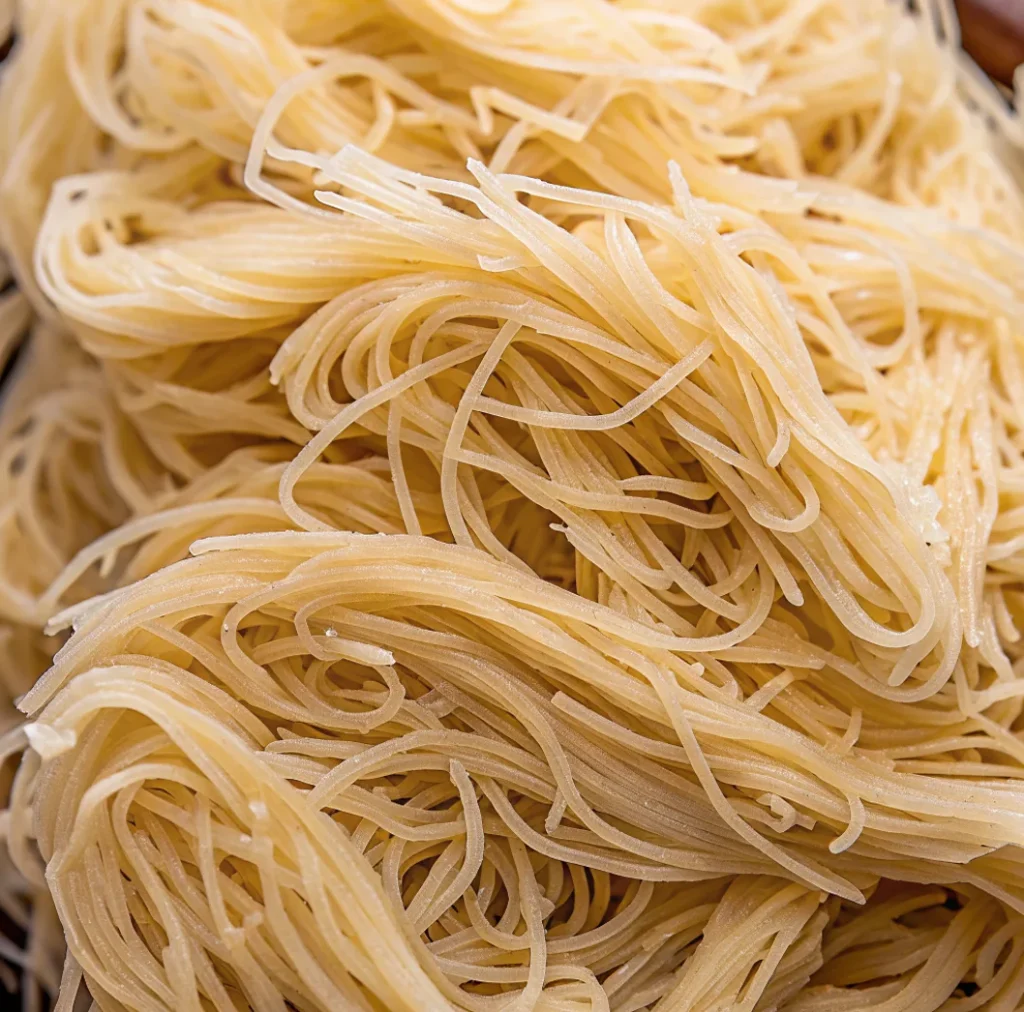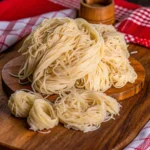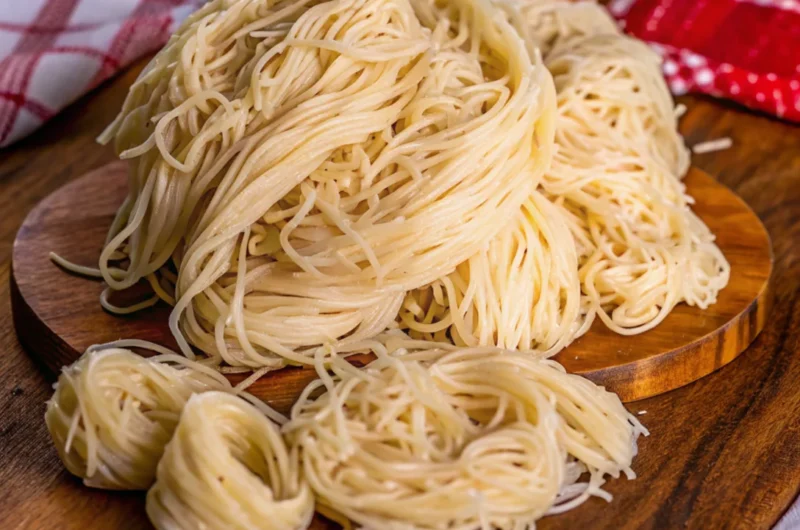Have you ever wondered how to recreate the intricate and delicious dessert of Kataifi from scratch? This mouth-watering pastry, known for its delicate layers of shredded dough, filled with sweetened nuts, and drenched in syrup, is a favorite treat in Middle Eastern, Greek, and Turkish cuisines. Whether you’re a seasoned chef or a beginner, mastering the kataifi recipe will add a whole new level of flair to your baking skills.
In this comprehensive guide, we’ll walk you through the process of making kataifi from scratch. We’ll break down the ingredients, step-by-step instructions, and even offer healthier alternatives and tips to make your kataifi truly unforgettable.
Ingredients List
To make the perfect kataifi, you’ll need the following ingredients:
Main Ingredients:
- Kataifi dough: 500g (shredded filo dough is available at specialty stores or online)
- Butter: 1/2 cup (melted, preferably unsalted for control over saltiness)
- Ground walnuts or pistachios: 1 cup (you can use any nut you prefer, but walnuts and pistachios are traditional)
- Granulated sugar: 1 cup (adjust for sweetness preference)
- Cinnamon powder: 1 tsp (optional, but adds a lovely flavor)
- Rosewater or orange blossom water: 1 tbsp (for that authentic aroma, though you can skip it if you prefer a subtler flavor)
- Honey: 2 tbsp (this will give your syrup a richer texture)
For the Syrup:
- Water: 2 cups
- Sugar: 2 cups
- Lemon juice: 1 tbsp (helps to balance the sweetness)
Substitutions:
- Nut alternatives: If you’re allergic to nuts or just prefer something else, shredded coconut or dried fruits like raisins can work well in place of nuts.
- Sweetener swaps: For a healthier option, use stevia or honey instead of sugar in the syrup, or opt for coconut oil instead of butter.
Sensory Descriptions:
Picture the warm, buttery aroma as the kataifi dough crisps in the oven, mingled with the nutty scent from the ground pistachios or walnuts. The syrup, infused with lemon, creates a perfect balance of sweetness and tartness that seeps into the delicate layers of dough.
Timing
One of the most beautiful aspects of this kataifi recipe is that it doesn’t require hours of preparation. Here’s a breakdown of the timing:
- Preparation time: 30 minutes
- Cooking time: 45 minutes
- Total time: 1 hour 15 minutes
This recipe is roughly 20% quicker than traditional kataifi preparations, making it an ideal dessert for when you’re short on time but still want to impress your guests.
Step-by-Step Instructions
Step 1: Preheat and Prepare
Preheat your oven to 350°F (175°C). While the oven heats up, take your kataifi dough (which you can find frozen in most Middle Eastern or Greek grocery stores) and gently thaw it if it’s frozen.
Tip: Be sure not to overwork the dough when unrolling it; the delicate strands should remain intact to maintain the traditional texture.
Step 2: Prepare the Filling
Melt the butter in a saucepan over medium heat. Once melted, toss in the ground walnuts (or pistachios), cinnamon, and honey. Stir gently to coat the nuts in the butter and honey mixture. Let this mixture sit aside to cool slightly.
Step 3: Assembling the Kataifi
Now, take handfuls of the shredded kataifi dough and spread them out on a baking sheet lined with parchment paper. Lightly brush each layer with the melted butter mixture.
Tip: Don’t rush this process—ensure that every single strand is coated in butter to get that crisp texture when baked.
Spoon the nut mixture along the center of each layer of dough. Roll the dough into a tight coil, resembling a small, flaky roll.
Step 4: Baking
Place the rolled kataifi on a baking sheet, making sure they’re snug but not crowded. Bake for about 45 minutes, or until they turn golden brown and crispy.
Tip: Keep an eye on your kataifi towards the end of the baking process to prevent them from burning.
Step 5: Preparing the Syrup
While your kataifi is baking, prepare the syrup by combining the water, sugar, and lemon juice in a small saucepan. Heat over medium heat, stirring occasionally until the sugar dissolves completely. Once dissolved, bring it to a boil, then reduce the heat and let it simmer for about 10 minutes.
Tip: Add a splash of rosewater or orange blossom water to the syrup to make it even more aromatic and authentic.
Step 6: Final Touches
Once the kataifi is golden brown, remove it from the oven and immediately pour the warm syrup over the hot pastries. The syrup will seep into the dough, giving the kataifi its signature sweetness.
Allow the kataifi to cool for about 10 minutes before serving to let the syrup fully absorb.

Nutritional Information
Making kataifi from scratch means you control all the ingredients, which can be a huge advantage for anyone watching their nutrition. Here’s a breakdown of the nutritional content per serving (1 roll):
- Calories: 250 kcal
- Protein: 4g
- Fat: 14g (mostly healthy fats from nuts and butter)
- Carbohydrates: 30g
- Fiber: 2g
- Sugar: 15g
- Sodium: 50mg
- Calcium: 20mg
These values are approximate and will vary depending on the specific ingredients used. You can make adjustments to suit your dietary needs by using alternatives like coconut oil, stevia, or nut-free versions.
Healthier Alternatives for the Recipe
While kataifi is a rich and indulgent dessert, there are several ways to make it healthier without compromising on flavor. Here are some suggestions:
- Use coconut oil instead of butter: This swap reduces the amount of saturated fat in the recipe, while giving the kataifi a slightly tropical flavor.
- Replace refined sugar with natural sweeteners: Honey, maple syrup, or stevia can reduce the glycemic impact of the dessert.
- Go for a nut-free version: Swap out the nuts for shredded coconut, dried fruits, or seeds to make the dessert allergen-friendly and still flavorful.
Serving Suggestions
Kataifi can be served in a variety of ways to make your presentation even more impressive:
- With a dollop of Greek yogurt: Pairing kataifi with creamy Greek yogurt adds a nice contrast of flavors.
- Drizzled with chocolate: For those with a sweet tooth, a drizzle of dark chocolate or chocolate sauce on top can take the dessert to a whole new level.
- Topped with fresh fruits: Raspberries, strawberries, or citrus fruits like orange zest can add a refreshing touch to balance the sweetness.
Common Mistakes to Avoid
- Not buttering the dough enough: A common mistake when making kataifi is not using enough butter. Without it, your kataifi will be dry and less crispy.
- Overcrowding the kataifi: When placing the rolls on the baking sheet, make sure there’s enough space between each piece to allow the dough to crisp evenly.
- Not using warm syrup: Ensure your syrup is warm when poured over the kataifi, as this helps it absorb into the dough and gives it that delightful sweetness.
Storing Tips for the Recipe
If you have any leftover kataifi, storing it properly is key to maintaining its freshness:
- Room temperature: You can keep the kataifi at room temperature for up to 2 days. Make sure it’s in an airtight container to avoid it becoming soggy.
- Freezing: To store kataifi longer, freeze the rolls before adding the syrup. When you’re ready to enjoy them, bake them from frozen and then drizzle the warm syrup on top.
- Reheating: If you have leftover kataifi, gently reheat it in the oven for 5-10 minutes to revive its crispy texture.

Conclusion
Making kataifi from scratch is not only achievable but incredibly rewarding. With a few key ingredients and simple steps, you can create this delicious dessert in no time. Whether you serve it as a special treat for friends or family, or enjoy it on your own, this kataifi recipe is sure to become a staple in your baking repertoire.
Ready to try making your own kataifi? Leave a comment below to share your feedback, or if you have any questions. Don’t forget to subscribe to our blog for more tasty recipes and cooking tips!
FAQs
Can I make kataifi ahead of time?
Yes! You can prepare the kataifi rolls and store them in the fridge for up to 24 hours before baking. Just make sure to add the syrup right before serving.
What kind of nuts can I use for the filling?
You can use any type of nuts you prefer, but walnuts, pistachios, and almonds are the most common choices. For a twist, you can even use a mix of nuts.
Can I make kataifi without syrup?
While the syrup is essential for the traditional kataifi experience, you can skip it if you prefer a less sweet version or use a lower-sugar alternative.
Print
How To Make Kataifi From Scratch
- Total Time: 1 hour 15 minutes
- Yield: 12 rolls 1x
Description
A step-by-step guide to making traditional Kataifi from scratch—crispy shredded dough rolls filled with sweetened nuts and soaked in aromatic syrup.
Ingredients
- 500g kataifi dough (shredded filo)
- 1/2 cup melted unsalted butter
- 1 cup ground walnuts or pistachios
- 1 cup granulated sugar
- 1 tsp cinnamon powder (optional)
- 1 tbsp rosewater or orange blossom water
- 2 tbsp honey
- For the Syrup:
- 2 cups water
- 2 cups sugar
- 1 tbsp lemon juice
Instructions
- Preheat the oven to 350°F (175°C) and thaw the kataifi dough if frozen.
- Melt the butter and mix in the ground nuts, cinnamon, and honey. Set aside to cool.
- Spread kataifi dough on parchment paper and brush with melted butter.
- Spoon nut mixture into the center and roll tightly into small coils.
- Place rolls on a baking sheet and bake for 45 minutes until golden and crisp.
- While baking, prepare the syrup: combine water, sugar, and lemon juice, bring to a boil, then simmer for 10 minutes. Add rosewater or orange blossom if desired.
- Pour warm syrup over hot kataifi once out of the oven and let sit for 10 minutes before serving.
Notes
Use enough butter to ensure a crispy texture and make sure syrup is warm when pouring. Avoid overcrowding rolls on the baking tray.
- Prep Time: 30 minutes
- Cook Time: 45 minutes
- Category: Dessert
- Method: Baked
- Cuisine: Middle Eastern
Nutrition
- Serving Size: 1 roll
- Calories: 250
- Sugar: 15g
- Sodium: 50mg
- Fat: 14g
- Saturated Fat: 7g
- Unsaturated Fat: 6g
- Trans Fat: 0g
- Carbohydrates: 30g
- Fiber: 2g
- Protein: 4g
- Cholesterol: 20mg
Keywords: kataifi, Middle Eastern dessert, shredded dough, syrup pastry








